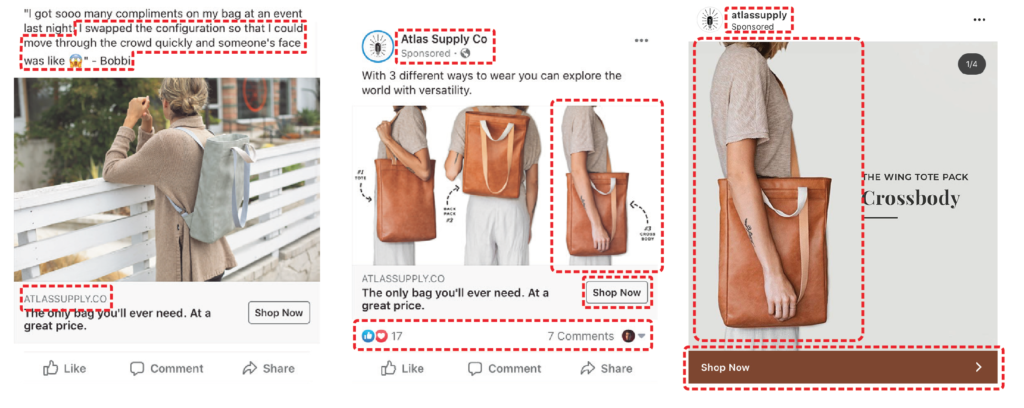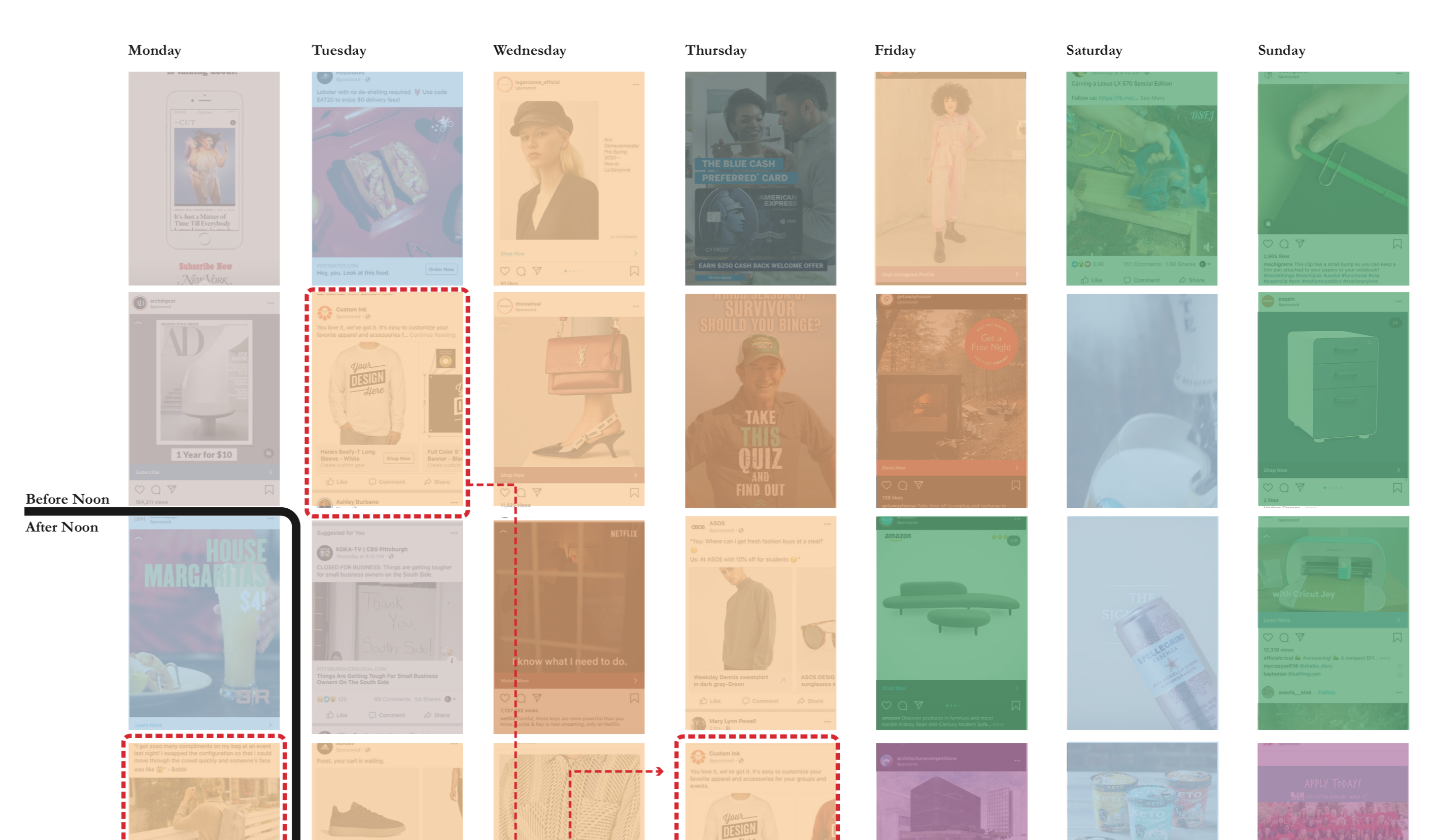
Through the duration of a one week period I took note of the sponsored advertisements popping up on my Instagram and Facebook feeds. Rather than analyzing the specific advertisements as they popped up, I chose to screenshot each one that I encountered, and at the end of the week cataloged these in chronological order, and divided them into seven groups: Clothing & Accessories, Events & Travel, News & Informational, Home & Furnishing, Employment & Post-Graduation Opportunity, Food and Miscellaneous. In this diagramming exercise. I noticed a pattern of events and food advertising appearing more frequently on weekends. It is unclear whether this is because I am on my phone more and/or because that is when one would be more likely to go out. During weekdays I experienced more targeted advertising for specific clothing items and international travel. This could be attributed to me going to an event that previous weekend, and looking into spring break trips. Regardless, I constantly see clothing advertising throughout the day, but seem to come across information about travel and events before noon.
If we understand Persuasion as being about convincing someone of something, certain companies seem to try piquing interest through more frequent advertisements. While the majority of the advertisements that I encountered only showed up once during the week shortly following me looking into certain products or experiences, I have highlighted the following two sponsored advertisements for existing on my newsfeed the most.

I have been aware of targeted advertising existing as a practice for sometime now, and have just accepted that if I google something I will be reminded of my search history in the near future. A few weeks prior to when I began collecting advertisements I purchased an assortment of T-Shirts, Tote Bags, Stickers, and Crewnecks from Custom Ink thus prompting my feed to remind me of that purchase every day. The ads consistently use terms like “love,” “favorite,” “custom,” and “your” trying to spark ideas of ownership, maybe even wanting to remind you of that one shirt you got from a concert that you really like. In contrast to this softer, romantic vocabulary they use words like “beefy,” “athletic,” and “stadium” to describe their products. We could dissect the similar white male being represented in every image, and showing that my friend likes the companies page as a means to remind me of self-identification and relationships.

Between the two companies I am highlighting there are a few different buttons presented prompting you to invest in their product. The subtle arrow in the one Custom Ink ad seems less apparent, in contrast to the bold “Shop Now” bar in the atlas supply ad. Atlas also uses two different handles on different platforms where they do not say they are a Company on instagram. Atlas focuses on using similar natural color palettes in each advertisement, but uses different wordage bouncing between sleek and professional versus more playful depending on the ad. They are sure to push ideas of versatility and durability through representing different ways to carry their product, and even inviting you to scroll through different images. Concepts of popularity are also pushed through made-up narratives about Bobbi, and displaying how many likes and shares a post has.
In analyzing these two companies efforts in trying to get my intention there must be an assumed reciprocity by those sharing their products. There is a hope that in all their sponsored shares I will feel urged to click “shop now,” and even if I do not purchase anything the company would at least have record that their promotional material worked on me. It is interesting to look at the strategies of representation, and what types of people look similar to me. It would be interesting to see how these issues of participation, representation and contextualization would alter for a different user. How different is my Custom Ink ad from yours? How does engagement with these ads change over time, across demographics, and through alterations of imagery and text?
Written and Documented by Michael Powell.
